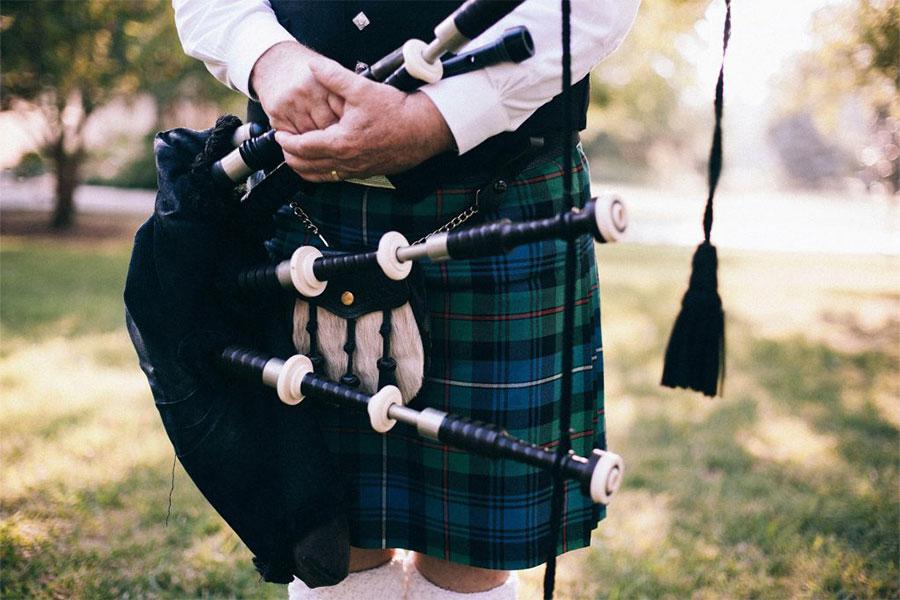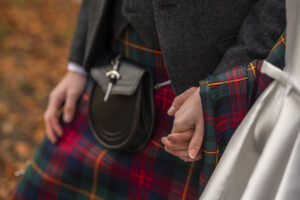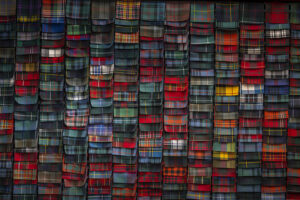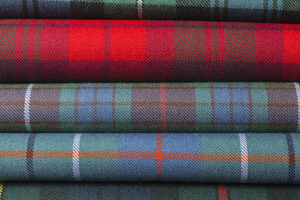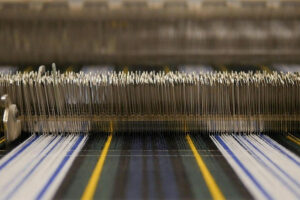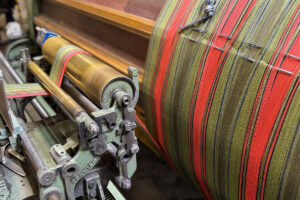The Difference between Scottish and Irish Kilts
The history of Scottish Kilts goes all the way back to the sixteenth century. Although kilts are traditionally associated with Scotland, they are also long-established in Irish culture.
Kilts are worn in Scotland and Ireland as a symbol of pride and a celebration of their Celtic heritage, yet each country’s kilt has many differences which we’ll explore in this post.

Source: Public Domain Archive
History
Scottish Kilts
The Scottish kilt dates as early back as the sixteenth century. This was called the Féileadh Mòr, and was a long, thick stretch of fabric that draped over the wearer’s shoulder as well as acting as a kilt.
The Féileadh Mòr was originally designed as a protective piece of clothing to shield the wearer from the tempestuous Scottish weather. It was not until the early nineteenth century when they became a symbol of Scottish identity and traditional Scottish dress.
After the Jacobite Risings in 1746, the government banned the wearing of Kilts and Tartan as they were afraid of further revolt and uprisings by Scottish clans.
By the end of the 18th century, the Féileadh Mòr evolved into the ‘small kilt’, a similar style to how the kilt appears today. Thomas Rawlinson, an Englishman who owned an iron works in Scotland is partly responsible for this. He was known to support the local textile industry and ordered a kilt to be made similarly to the Féileadh Mòr but more fitted to the body and with a pleated back.
In the late nineteenth century, we were introduced to the modern kilt, complete with pleats and buckling. This is the kilt we all know and recognise today.
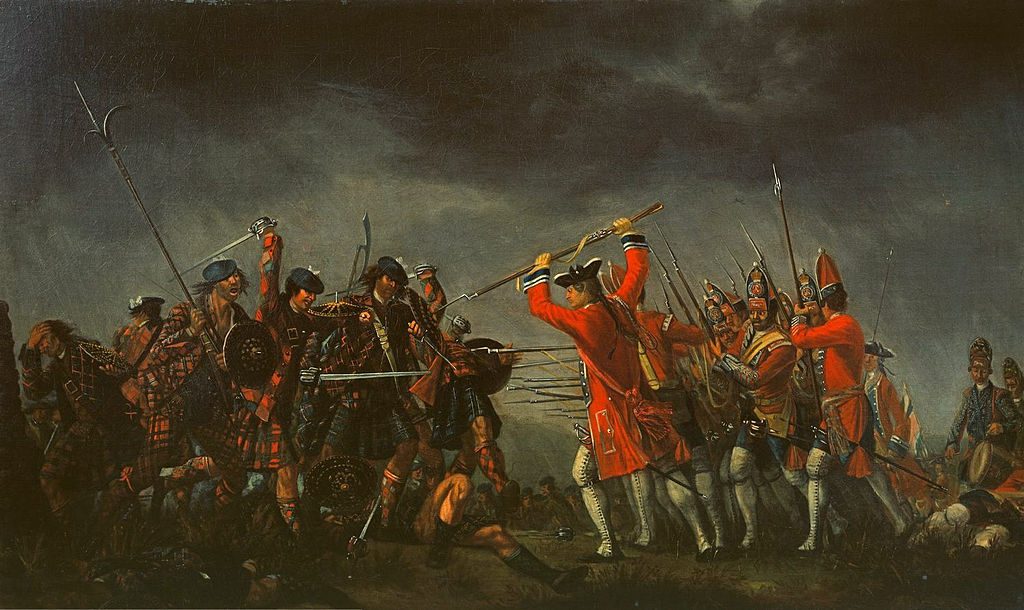
The Battle of Culloden in 1746
Irish Kilts
Many believed that the Lein-croich was the first version of the Irish kilt, however, this was a long tunic in block colour and is not a traditional Irish kilt.
The Irish national tartan was introduced as a symbol of Gaelic tradition during the rise of Irish nationalism and as a response to the ongoing anglicisation of Ireland.
The traditional kilt which is associated with Ireland is the Saffron Kilt. The Saffron Kilt is mustard yellow in colour, often with shamrock appliques down the pleat. Saffron Kilts were first worn by the Irish military in the British Army during the twentieth century, and it’s the most widely worn kilt in Ireland today. Similarly, the Féileadh Mòr was also worn by Scottish troops on the battlefield.
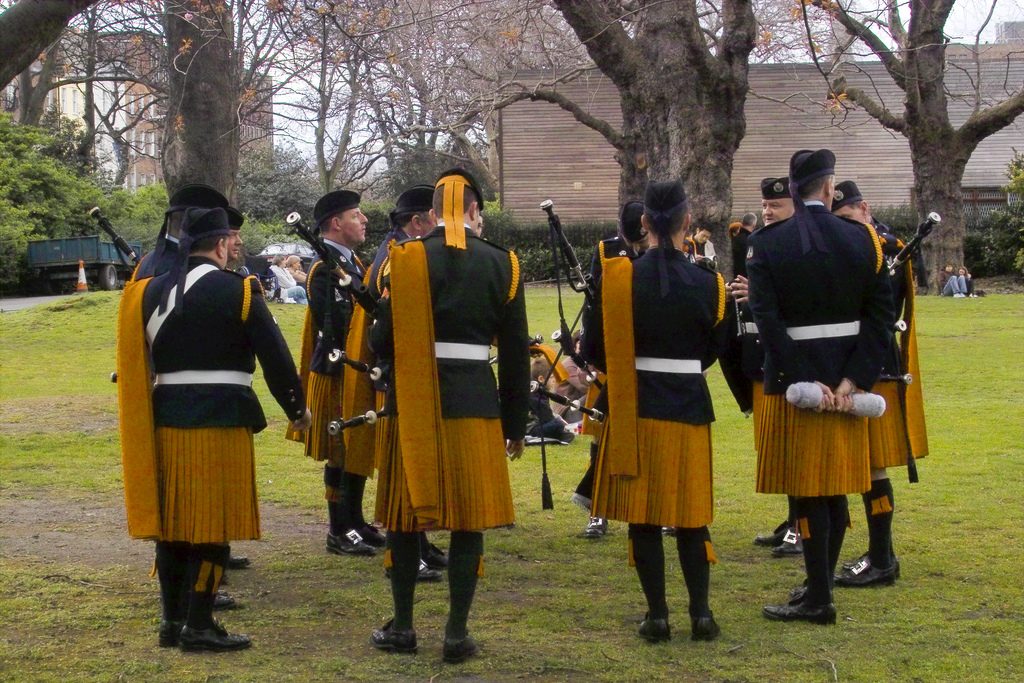
Members of the Irish Army Pipe Band wearing the traditional Saffron Kilt.
Tartan
This is where the Scottish and Irish kilts differ the most, as the tartan used to make the kilts have very different origins and meanings.
Scottish tartans are a representation of a Scottish clan, and each Scottish family has their own tartan, distinguished by their surname. There are over 7000 registered Scottish tartans.
However, Irish tartans are designed to represent the districts and counties of Ireland. For example, if you originated from Cork, you would wear a kilt made with the Cork County Tartan.
At Lochcarron of Scotland, we offer a selection of Irish tartans. Explore our Collection.
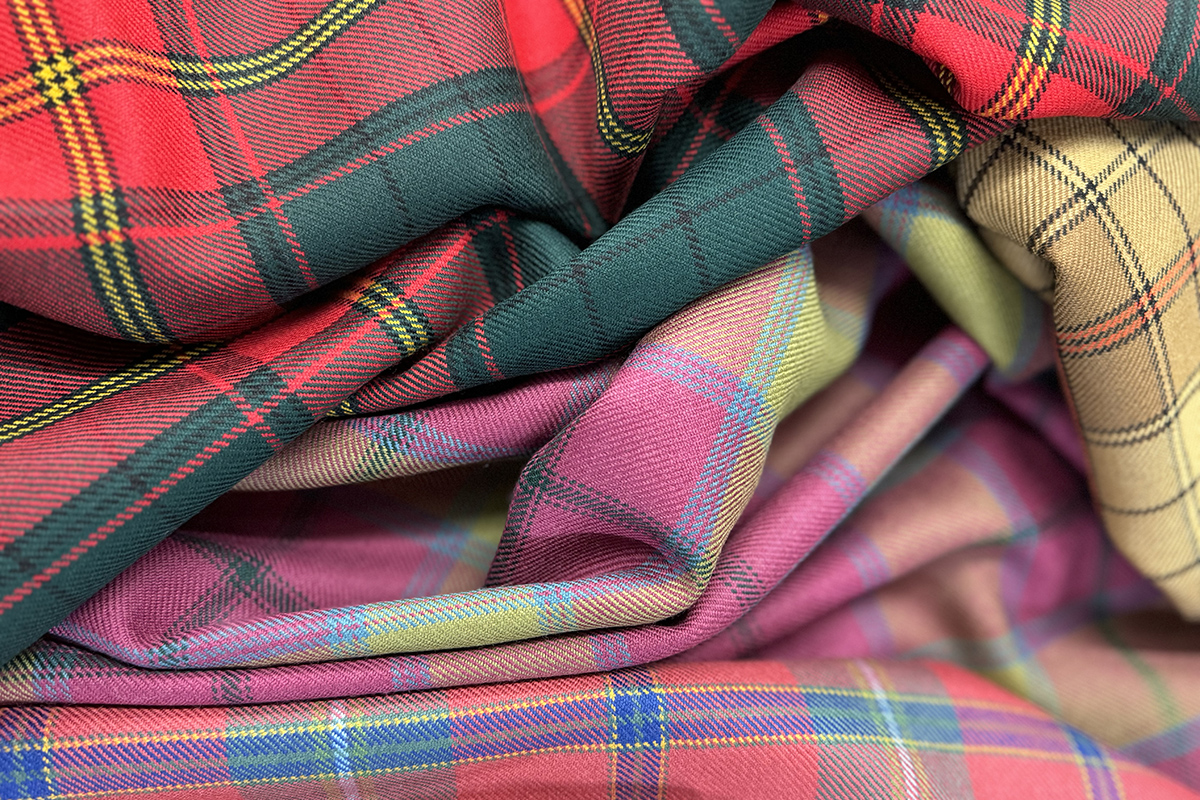
Kilt Accessories
What is traditionally worn with Scottish and Irish Kilts? There are many similarities between them.
Crests
Scots often wear their clan crests pinned to their tartan on formal occasions. It’s the tradition in Scottish Weddings for a crest of the accepting family to be fastened to the spouse’s tartan by a member of the accepting family. This symbolises belonging and unity of the families.
In Ireland, it’s not as common to have a crest of your family pinned onto your tartan. Often, Irishmen pin a shamrock crest onto their tartan or leave it bare.
Sporrans
The Sporran is the pocket attached to the front of a kilt, and this is a traditional accessory to both Scottish and Irish kilts.
There are no distinct differences between Irish and Scottish sporrans. However, you can buy Irish sporrans complete with shamrocks and green detailing. Likewise, many Scottish sporrans incorporate Scottish thistle or traditional Celtic designs.
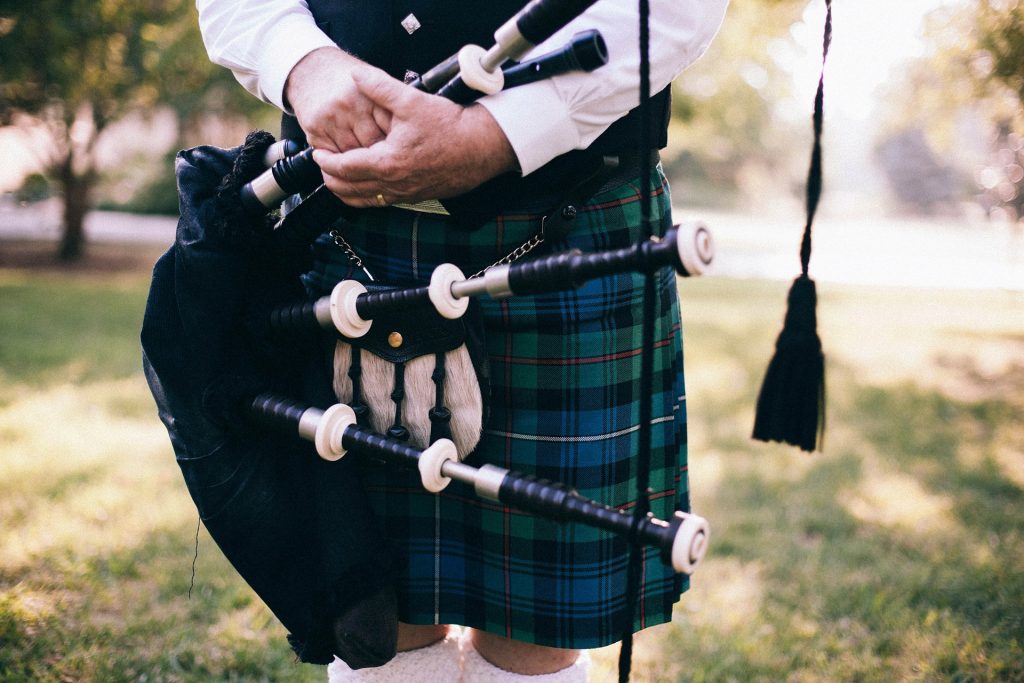
Kilt Jackets
Irish and Scottish kilts are both worn with different jackets for formal and casual occasions.
For formal wear, Scots wear their kilts with a Prince Charlie Jacket. The Prince Charlie is distinguished by the satin lapels and tails, and embellishments on the sleeves, front, lapels, and tails. Traditionally this jacket would be worn with a waistcoat, bow tie, and a wing collar shirt.
Similarly, the Brian Baru jacket is the Irish pick for formal dress. The Brian Baru is very similar to the Prince Charlie jacket, and would also be worn with a bow tie, waistcoat and wing collar shirt for formal occasions.
The Argyll Jacket is a less formal Scottish kilt jacket, that would be suitable for daytime and eveningwear. The Argyll has ornate buttons on the pocket flaps and cuffs. However, these are not on the back of the jacket like the Prince Charlie. The Argyll would usually be worn with a standard collar shirt and bow tie.
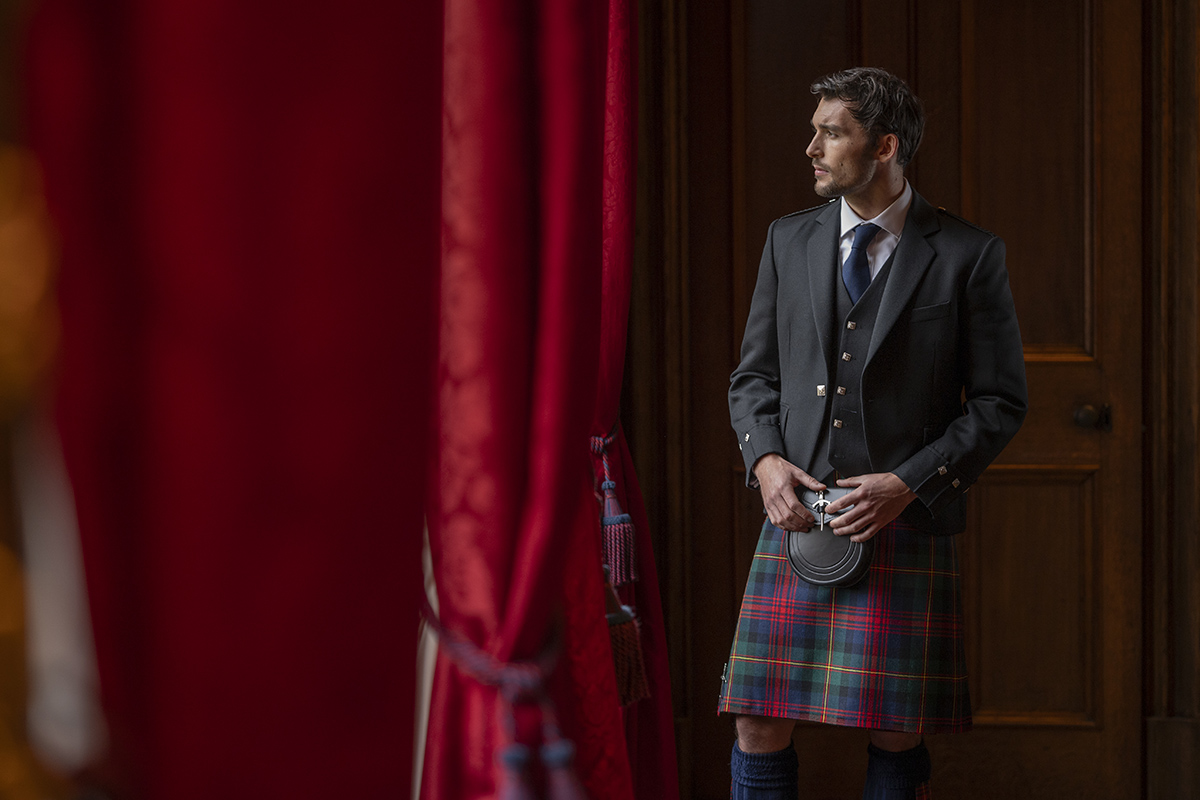
The Barathea Argyll Kilt Jacket
The Irish equivalent of the Argyll is the Kilkenny jacket. This can be worn for both formal and casual occasions. The Kilkenny is structured like a standard suit jacket and has ornate buttons dressing the front. This should be worn with a standard collared shirt, waistcoat, and necktie, and is often a shade of Irish green.
Hats
The Glengarry is the traditional Scottish hat worn with full Highland dress. The Glengarry has a toorie (pom pom) on top, and a chequered red and white design on the side.
Socks and Shoes
Both traditional dress in Scotland and Ireland include wearing knee high socks with ribbons that match the colour of your tartan, with Ghillie Brogues on the feet. These socks are usually cream, although the Irish military wears black socks with their Saffron Kilts.
It’s also a tradition in Scotland for a little knife called a Sgian-dubh to be placed inside the sock on the side of your dominant hand.

